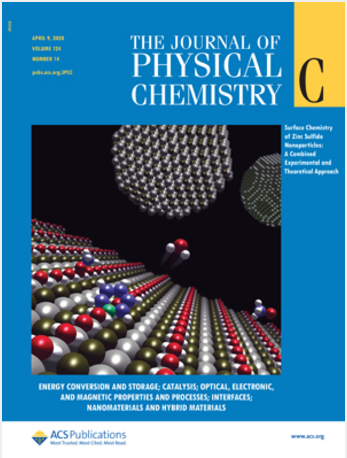通过圆偏振光增强手性诱导自旋选择性
IF 3.3
3区 化学
Q2 CHEMISTRY, PHYSICAL
引用次数: 0
摘要
手性诱导自旋选择性效应(CISS)早在1999年就被发现,但由于其自旋极化相对较低,实际应用面临挑战。本文报道了圆偏振光(CPL)可以通过间接强光-物质相互作用显著增强CISS效应。特别是,我们发现光诱导的贝里力可以强烈地影响核运动,导致自旋选择性从接近0到几乎100%。我们的研究结果表明,在观察到的实验中,单独的自旋轨道耦合不能解释大的自旋选择性,电子-核耦合和电子-光子耦合的非绝热效应应该纳入CISS模型。我们发展的理论可以作为使用CPL实验控制CISS效应的设计原则。本文章由计算机程序翻译,如有差异,请以英文原文为准。

Enhancement of Chiral-Induced Spin Selectivity via Circularly Polarized Light
Although the chiral-induced spin selectivity (CISS) effect was discovered in 1999, the practical applications of the CISS effect face challenges due to relatively low spin polarization. Here, we report that circularly polarized light (CPL) can significantly enhance the CISS effect through indirect strong light–matter interactions. In particular, we show that the light-induced Berry force can strongly affect nuclear motion, resulting in spin selectivity from near 0 to almost 100%. Our results demonstrate that the spin–orbit couplings alone cannot explain the large spin selectivity in observed experiments, and nonadiabatic effects from electron–nuclear couplings and electron–photon couplings should be incorporated into the CISS modeling. The theory we developed can be used as the design principle for experimentally controlling CISS effects using CPL.
求助全文
通过发布文献求助,成功后即可免费获取论文全文。
去求助
来源期刊

The Journal of Physical Chemistry C
化学-材料科学:综合
CiteScore
6.50
自引率
8.10%
发文量
2047
审稿时长
1.8 months
期刊介绍:
The Journal of Physical Chemistry A/B/C is devoted to reporting new and original experimental and theoretical basic research of interest to physical chemists, biophysical chemists, and chemical physicists.
 求助内容:
求助内容: 应助结果提醒方式:
应助结果提醒方式:


